
Michael Latham Powell was an English filmmaker, celebrated for his partnership with Emeric Pressburger. Through their production company The Archers, they together wrote, produced and directed a series of classic British films, notably The Life and Death of Colonel Blimp (1943), A Canterbury Tale (1944), I Know Where I'm Going! (1945), A Matter of Life and Death, Black Narcissus (1947), The Red Shoes (1948), and The Tales of Hoffmann (1951).

Emeric Pressburger was a Hungarian-British screenwriter, film director, and producer. He is best known for his series of film collaborations with Michael Powell, in a collaboration partnership known as the Archers, and produced a series of films, including 49th Parallel (1941), The Life and Death of Colonel Blimp (1943), A Matter of Life and Death, Black Narcissus (1947), The Red Shoes (1948), and The Tales of Hoffmann (1951).

Chesil Beach in Dorset, England is one of three major shingle beach structures in Britain. Its name is derived from the Old English ceosel or cisel, meaning "gravel" or "shingle". It runs for a length of 29 kilometres (18 mi) from West Bay to the Isle of Portland and in places is up to 15 metres (50 ft) high and 200 metres (660 ft) wide. Behind the beach is the Fleet, a shallow tidal lagoon. Both are part of the Jurassic Coast and a UNESCO World Heritage Site, and together form an SSSI and Ramsar Site.
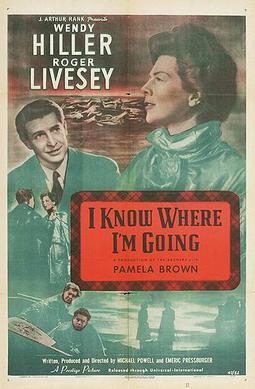
I Know Where I'm Going! is a 1945 romance film by the British-based filmmakers Michael Powell and Emeric Pressburger. It stars Wendy Hiller and Roger Livesey, and features Pamela Brown and Finlay Currie.

The British film-making partnership of Michael Powell (1905–1990) and Emeric Pressburger (1902–1988)—together often known as The Archers, the name of their production company—made a series of influential films in the 1940s and 1950s. Their collaborations—24 films between 1939 and 1972—were mainly derived from original stories by Pressburger with the script written by both Pressburger and Powell. Powell did most of the directing while Pressburger did most of the work of the producer and also assisted with the editing, especially the way the music was used. Unusually, the pair shared a writer-director-producer credit for most of their films. The best-known of these are The Life and Death of Colonel Blimp (1943), A Canterbury Tale (1944), I Know Where I'm Going! (1945), A Matter of Life and Death (1946), Black Narcissus (1947), The Red Shoes (1948), and The Tales of Hoffmann (1951).
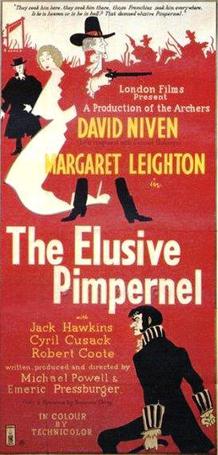
The Elusive Pimpernel is a 1950 British period adventure film by the British-based director-writer team of Michael Powell and Emeric Pressburger, based on the novel The Scarlet Pimpernel (1905) by Baroness Emmuska Orczy. It was released in the United States under the title The Fighting Pimpernel. The picture stars David Niven as Sir Percy Blakeney, Margaret Leighton as Marguerite Blakeney and features Jack Hawkins, Cyril Cusack and Robert Coote. Originally intended to be a musical, the film was re-worked as a light-hearted drama.

Gone to Earth is a 1950 British Technicolor film created by the director-writer team of Michael Powell and Emeric Pressburger. It stars Jennifer Jones, David Farrar, Cyril Cusack and Esmond Knight. The film was significantly changed for the American market by David O. Selznick and retitled The Wild Heart in 1952.

Ill Met by Moonlight (1957), released in the USA as Night Ambush, is a film by the British writer-director-producer team of Michael Powell and Emeric Pressburger, and the last movie they made together through their production company "The Archers". The film, which stars Dirk Bogarde and features Marius Goring, David Oxley, and Cyril Cusack, is based on the 1950 book Ill Met by Moonlight: The Abduction of General Kreipe by W. Stanley Moss, which is an account of events during the author's service on Crete during World War II as an agent of the Special Operations Executive (SOE). The title is a quotation from Shakespeare's A Midsummer Night's Dream, and the book features the young agents' capture and evacuation of the German general Heinrich Kreipe.
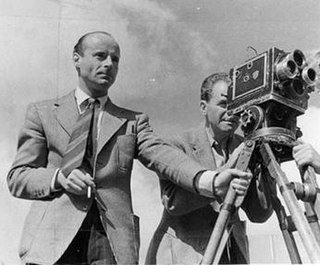
Erwin Hillier was a German-born cinematographer known for his work in British cinema from the 1940s to 1960s.

Nigel Marlin Balchin was an English psychologist and author, particularly known for his novels written during and immediately after World War II: Darkness Falls from the Air, The Small Back Room and Mine Own Executioner.
Christopher George Joseph Challis BSC, FRPS was a British cinematographer who worked on more than 70 feature films from the 1940s onwards.
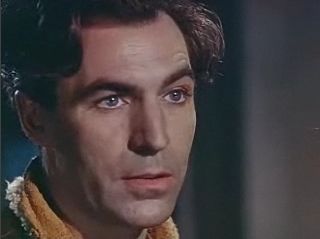
David Farrar was an English stage and film actor.

St Catherine's Chapel is a small chapel situated on a hill above the village of Abbotsbury in Dorset, England. It is dedicated to Saint Catherine. It is now in the guardianship of English Heritage and became a Grade I listed building in 1956. The chapel is also scheduled together with the field systems and quarries on the hill.

Abbotsbury was the terminus of the Abbotsbury branch railway in the west of the English county of Dorset. Serving the village of Abbotsbury, it was sited across the fields a mile from the village on the Weymouth to Abbotsbury road, because the railway could not buy the land needed to build the station nearer to the village. Plans for westward expansion came to nothing and led to the railway petering out in a shallow cutting to the west of the station.

Waterfront is a 1950 British black and white drama film directed by Michael Anderson and starring Robert Newton, Kathleen Harrison and Avis Scott. It is based on the 1934 novel of the same name by John Brophy.

Miracle in Soho is a 1957 British drama film directed by Julian Amyes and starring John Gregson, Belinda Lee and Cyril Cusack. The film depicts the lives of the inhabitants of a small street in Soho and the romance between a local road-builder and the daughter of Italian immigrants.
Walter Percy Day O.B.E. (1878–1965) was a British painter best remembered for his work as a matte artist and special effects technician in the film industry. Professional names include W. Percy Day; Percy Day; "Pop" or "Poppa" Day, owing to his collaboration with sons Arthur George Day (1909–1952) draughtsman, Thomas Sydney Day (1912–1985), stills photographer and cameraman, and stepson, Peter Ellenshaw, who also worked in this field.
Fred Daniels was an English pioneer of still photography in the film industry and recognised by the BFI. Daniels was the first portrait photographer to popularise Powell and Pressburger and created stylised photographs that were developed into publicity material. In a effort to retain creative freedom Daniels maintained copyright of his work and developed hand printed photographs from his small studio. These were often signed works. His portraits will be forever linked to Powell and Pressburger.

Night Without Stars is a 1951 British black-and-white dramatic thriller film directed by Anthony Pelissier and starring David Farrar, Nadia Gray and Maurice Teynac. The screenplay was by Winston Graham based on his 1950 novel of the same name. The film was produced by Hugh Stewart.
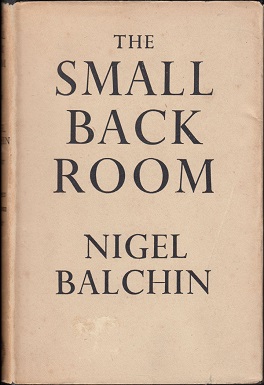
The Small Back Room is a 1943 British thriller novel by Nigel Balchin, a pioneer of the use of computers, who later became Deputy Science Adviser (Army). It makes fun of 'the lesser back-room boy'.

















